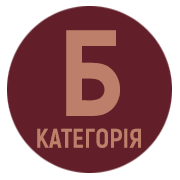МІФОЛОГІЧНІ ОБРАЗИ І СЮЖЕТИ В ТВОРЧІЙ РЕЦЕПЦІЇ НІЛА ГЕЙМАНА (КНИГА «СКАНДИНАВСЬКА МІФОЛОГІЯ»)
DOI:
https://doi.org/10.24919/2522-4565.2023.53.13Ключові слова:
міфологічні сюжети, Ніл Гейман, скандинавська міфологія, фентезі, міфологічні образиАнотація
У статті досліджено роль та вплив скандинавської міфології на творчу практику популярного англійського письменника Ніла Геймана, проаналізовано його книгу «Скандинавська міфологія», увиразнено художні прийоми та засоби, за допомогою яких письменник трансформує / осмислює міфологічні образи та сюжети, надаючи їм авторської самобутності: «перетворює» класичних міфологічних персонажів у цікавих літературних героїв, зберігаючи при цьому основну суть їхніх характерів та взаємин. У книзі Н. Гейман використовує фантастику, міф як один із прийомів моделювання художнього тексту, порушуючи проблему природи людського, божественного, міфологічного. Відзначено, що ігровий принцип інтертекстуальності автор застосовує для ускладнення структури художнього тексту, прямо чи опосередковано цитує першоджерела. Звернуто увагу на насиченість авторської версії міфів власними назвами. Складні у написанні та вимові імена письменник пояснює у словничку, який подано у кінці книги. Ніл Гейман, наслідуючи сюжети еддичних міфів, істотно не змінює їх, не наповнює образи новим змістом. Однак він надає міфам логічну послідовність, акцентує причинно-наслідкові зв’язки та використовує сучасний вокабулярій в описі емоційного стану персонажу (що може сприйматися як прояв гумору автора). Констатовано, що стиль твору дає змогу розглядати книгу «Скандинавська міфологія» як авторський переказ сюжетів міфів, які існують у різних версіях. Враховуючи те, що вже в ХІІІ ст. міфи значною мірою втратили свій зв’язок із ритуалом і сприймалися як художній твір, така їх модернізація письменником може розглядатися як свого роду ремеїк, в якому не варто шукати слідів дохристиянських культів. Відзначено, що Н. Гейман у своїй книзі детально відтворює традиційні уявлення про богів, використовуючи постмодерністський принцип цитатності, що значно ускладнює структуру твору, але не руйнує художньої цілісності.
Посилання
Бережна М. Імена власні в романі жанру фентезі : методи формування відповідників. Нова філологія. 2008. № 29. С. 249–255.
Волков А. Теорія традиційних сюжетів та образів. Літературознавча компаративістика : навч. посіб.; (наук. ред. Р. Т. Гром’як, упоряд. Р. Т. Гром’як, І. В. Папуша). Тернопіль : Редак.-видавничий відділ ТДПУ, 2002. 360 с.
Гейман Н. Скандинавська міфологія (пер. М. Бакалова). Київ : КМ БУКС. 2017. 256 с.
Іваненко В. Інтермедіальні виміри літератури фентезі. Центр з дослідження літератури фентезі при Інституті літератури ім. Т. Г. Шевченка НАН України, 2016. С. 5–17.
Кравченко Е. О. Поетика зв’язків і відношень імені – тексту – поетонімосфери : дис. д-ра філол. наук : 10.02.15. Київ : Київський національний університет імені Т. Шевченка, 2017. 560 с.
Лозовик О. Сучасна англійська літературна казка у творчості Ніла Геймана : автореф. дис. канд. філол. наук. Київ, 2015. 18 с.
Яковенко О. Жанрові особливості фентезі. Вісник державного лінгвістичного університету. 2008. № 1. С. 143–144.
Attebery B. Stories about Stories : Fantasy and the Remaking of Myth. Oxford University Press, 2013. 256 p.
Gaiman N. Biography, 2017. URL : http://www.neilgaiman.com/About_Neil/Biograph).
Gaiman N. Journal. 2018. URL : http://journal.neilgaiman.com.
Rodney Sharkey, James Fleming and Zuleyha Cetiner-Oktem's articles в ImageTexT's special issue on Gaiman's work. URL : https://imagetextjournal.com/a-special-issue-on-the-works-of-neilgaiman.
Volker B. Es genügt nicht die einfache Wahrheit. Notate. Frankfurt am Mein, 2007. 150 р.



